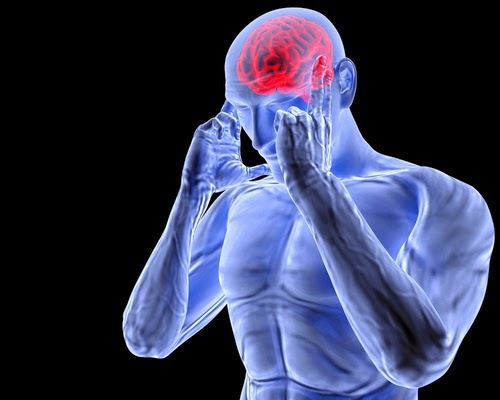in Health / Mental Health (submitted 2014-12-09)
Dogs are not usually pets – they’re family members. But what’s going on between those hairy ears?
Dogs are a dear partial of a families. Humans and dogs have lived together for 30,000 years, with dogs tracing their roots behind to their ancestors, a wolves. It began with ancient wolves training to fodder a bits of early hunters-gatherers, in spin providing warning and invulnerability opposite other predators. Fast brazen to a 21st century and you’ll find that dogs are common fixtures in roughly half of American households.
We’ve come a prolonged approach from small co-dependency. As most as we adore a dogs, it seems like they adore us right back, right? Consider how vehement they get to see their family, thumping their tails and spinning in circles. Or how they invade a laps, or lick a faces, or follow us from room to room. But given dogs can’t tell us what’s going on inside their bushy heads, can we ever be sure?
Thanks to new developments in mind imaging technology, a answer is yes. Scientists are investigate a smarts of dogs and commencement to get a improved design of a happenings inside a dog cranium.
The studies uncover that not usually do dogs seem to adore us back, they indeed see us as their family. Remember, dogs are inherently container animals and we are their pack. Dogs, it seems, rest on humans some-more than they do their possess kind for affection, insurance and all in between.
It’s All In The Nose
Recent neuroimaging studies about dog fragrance processing, conducted during Emory University, yield clever justification that dogs are intensely clinging to humans. Because dogs navigate a universe by their noses, a approach they routine smell offers a lot of intensity discernment into amicable behavior. Scientists used MRI machines and fMRI (functional captivating inflection imaging) to magnitude a neural responses of dogs to a smell of people and dogs, both informed and unknown.
The scientists found that dog owners’ aroma indeed sparked activation in a “reward center” of their brains, called a caudate nucleus. Of all a smells to take in, and dogs take in a lot (you would too if we had over 220 million olfactory receptors – compared to a human’s 5 million) dogs indeed prioritized a spirit of humans over anything or anyone else. We are their reward.
I’m All Ears
In Budapest, researchers during Eotvos Lorand University complicated dog mind activity in response to opposite tellurian and dog sounds, including voices, barks and a suggestive grunts and sighs both class emit.
One of a many startling commentary a investigate suggested was a identical ways in that dog and tellurian smarts processed emotionally brimful outspoken sounds. Researchers found that happy sounds in sold light adult a heard cortex in both of us. Dogs are indeed physically connected to collect adult on a moods and mood changes. They know when we need entertaining up, or comfort, or protection.
“It’s unequivocally engaging to know a apparatus pack that helps such successful outspoken communication between dual species,” Attila Andics, a neuroscientist and lead author of a study, said. “We didn’t need neuroimaging to see that communication works [between dogs and people], though though it, we didn’t know because it works. Now we’re unequivocally starting to.”
Behave Yourself
Behavior investigate also supports a new discoveries in neuroscience. According to Andics, dogs correlate with their tellurian caregivers in a same approach babies do their parents. Think of a final time a large charge rolled in, or fireworks on a fourth of July. When dogs are frightened or worried, they run to their owners, usually as a unsettled toddler competence make censor behind their parents. This doesn’t reason loyal for other animals. “Scaredy” cats, as good as horses, will run away.
Look Into My Eyes
Dogs are also a usually non-primate animal to demeanour people in a eyes. This is a singular function between dogs and humans — dogs find out eye hit from people, though not their biological dog parents.
“Bonding with owners is most some-more critical for dogs than other pets,” pronounced Andics.
It Takes Two To Tango
Scientists have also looked during a dog-human attribute from a tellurian side. Dogs aren’t a usually ones behaving on, or reciprocating, feelings – people are doing a same with their dogs. In a Massachusetts General Hospital study, researchers totalled tellurian mind activity in response to photos of dogs and children. Study participants were women who’d had dogs and babies for during slightest dual years. Both forms of photos sparked activity in mind regions compared with emotion, reward, affiliation, visible estimate and amicable interaction. Both of their children done them equally happy, non-furry and furry; dual legs and four.
It’s Written All Over Your Face…or is it?
We competence consider we have a four-legged friends all figured out, though that’s not indispensably a case. For instance, that drooped ear, shoulder hunched, tail tucked demeanour we consider signifies guilt? Most function experts determine that that requires a multifaceted idea of self-awareness that dogs substantially don’t have. Your dog is substantially usually reacting to your mood change and scheming for a scolding. Apparently digging by a rabble is not excusable behavior. Woof.
However, usually as we know a tellurian family flattering well, a intrinsic hunches about dog function are mostly correct.
“Sometimes a premonition about what’s going on inside dogs’ heads is dead-on,” pronounced Laurie Santos, a lead researcher during Yale’s Canine Cognition Center. “Like, that dogs are seeking out assistance from us — and that’s loyal formed on studies — that is opposite from even their closest relatives, wolves.”
While we might not know accurately what is going on inside a dogs’ heads, we can penchant a fact that we know a pets adore us as most as we hoped, maybe even more. They see us as family. And to us? They’re some-more than usually man’s best friend…they’re a babies.
About a Author
David M. Cunic, is a successful earthy therapist and personal tutor for Pazoo, Inc., a Health Wellness association for people pets. To learn some-more revisit us during http://www.pazoo.com.


